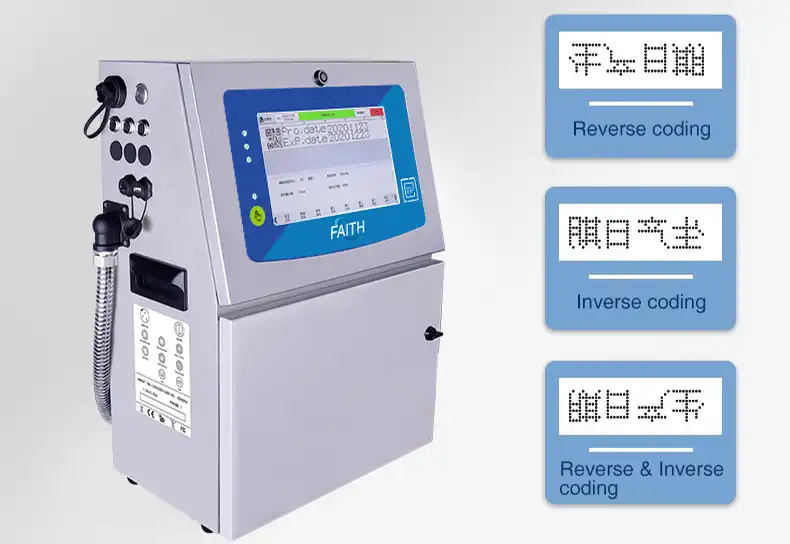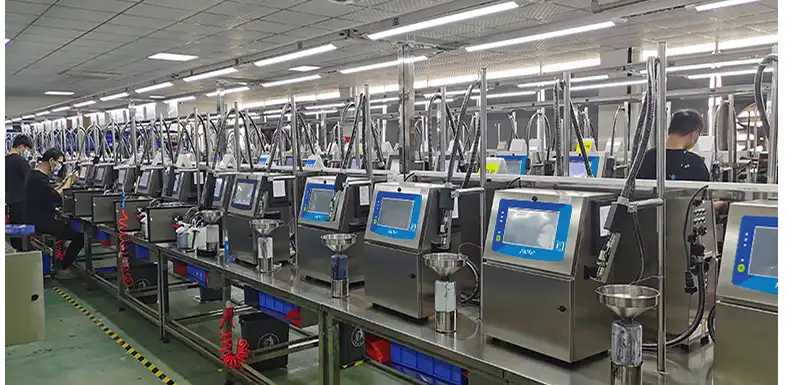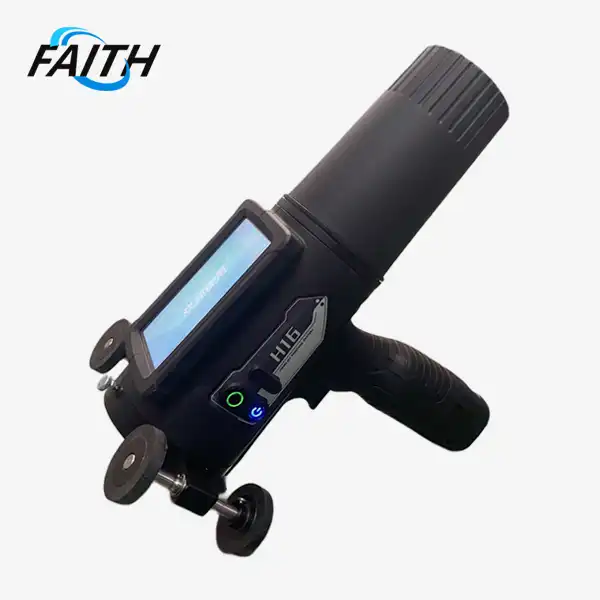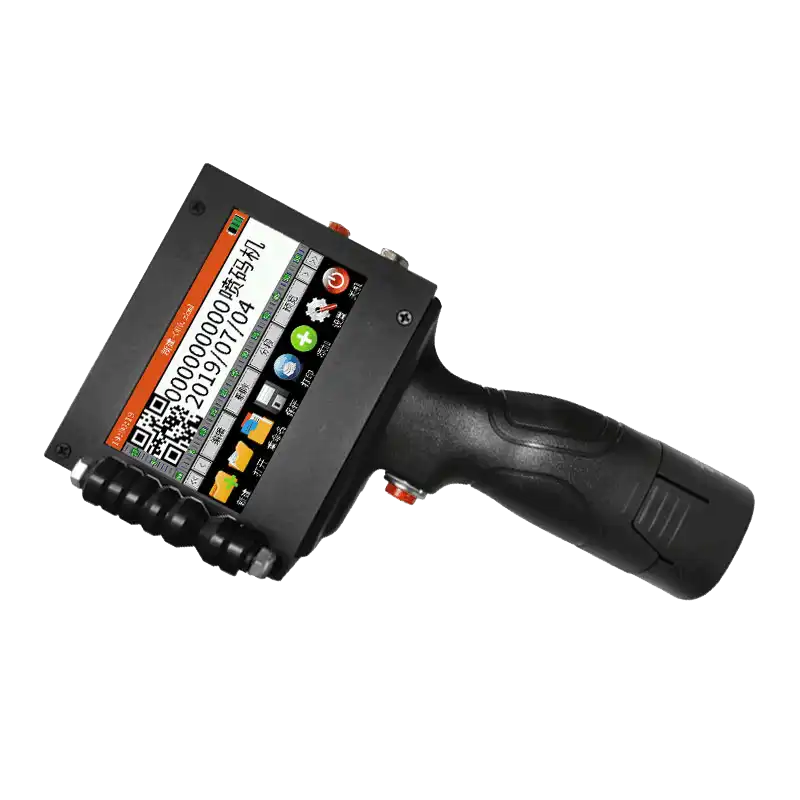The Ultimate Buying Guide for Small Character Inkjet Printers
Navigating the world of small character inkjet coders can be a daunting task for businesses seeking efficient and reliable marking solutions. This comprehensive guide aims to simplify the process, offering valuable insights into the key features, applications, and considerations when selecting the ideal small character inkjet printer for your specific needs. From understanding the technology behind these versatile machines to evaluating crucial factors like print quality, speed, and compatibility with various substrates, we'll equip you with the knowledge to make an informed decision. Whether you're in the food and beverage industry, electronics manufacturing, or any sector requiring precise and durable product coding, this guide will help you find the perfect small character inkjet coder to streamline your production line and enhance your product identification processes.
Small Character Inkjet Printers: Technology and Applications
The Fundamentals of Continuous Inkjet (CIJ) Technology
Small character inkjet coders, often utilizing Continuous Inkjet (CIJ) technology, have revolutionized product marking across various industries. These printers operate by generating a continuous stream of ink droplets, which are then selectively charged and deflected to create precise characters on the substrate. This technology allows for high-speed, non-contact printing on a wide range of materials, making it invaluable for production lines where versatility and efficiency are paramount.
The heart of a CIJ system, such as the FBP002 model, lies in its main components:
- Inkjet Printhead: This crucial element delivers precise and continuous ink droplets for high-quality marking. The precision of the printhead significantly impacts the clarity and durability of the printed content.
- Controller: Acting as the brain of the system, the controller manages print settings and ensures the printer operates smoothly and efficiently. It coordinates all aspects of the printing process, from ink flow to character formation.
- Ink and Solvent System: This component provides a constant flow of ink and ensures durability in harsh conditions. The ink formulation plays a vital role in print quality and adhesion to various substrates.
- User Interface: A simple and intuitive interface enables quick adjustments and real-time monitoring of print performance, enhancing operator efficiency and reducing downtime.
Versatility in Printing Materials and Content
One of the most significant advantages of small character inkjet coders is their ability to print on a diverse range of materials. The FBP002, for instance, can mark on cartons, plastics, metals, plates, pipes, stones, cables, glass, electronic components, auto parts, industrial chemical packaging, food packaging, and gift boxes. This versatility makes the faith printers indispensable across multiple industries.
The content that can be printed is equally diverse, including:
- Text
- Time and date stamps
- Logos
- Dynamic barcodes and QR codes
- Serial data
- Database-driven dynamic content
This flexibility allows businesses to meet various product identification, traceability, and branding requirements with a single machine.

Key Features to Consider When Choosing a Small Character Inkjet Coder
Print Quality and Resolution
The quality of print produced by a small character inkjet coder is crucial for ensuring legibility and compliance with industry standards. When evaluating print quality, consider the following aspects:
- Font Options: Look for printers that offer a range of font sizes and styles. For example, the FBP002 provides various options from 5x6L to 32x32B, allowing for both compact and larger, more prominent markings.
- Resolution: Higher resolution capabilities result in sharper, more defined characters. This is particularly important when printing small text or complex logos.
- Contrast: The ink should provide good contrast against the substrate for easy readability. This is where specialized inks come into play.
Print Speed and Production Line Compatibility
In high-speed production environments, the print speed of your small character inkjet coder can significantly impact overall efficiency. Consider these factors:
- Maximum Print Speed: The FBP002, for instance, boasts an impressive print speed of up to 576m/min, making it suitable for fast-moving production lines.
- Multi-line Printing: The ability to print multiple lines simultaneously can increase information density without sacrificing speed. Look for printers that offer flexibility in the number of print lines, such as the 1-5 line capability of the FBP002.
- Integration: Ensure the printer can seamlessly integrate with your existing production line without causing bottlenecks.
Ink Performance and Substrate Compatibility
The type of ink used in your small character inkjet coder plays a crucial role in print durability and adhesion. Consider these ink properties:
- Adhesion: High-adhesion inks ensure that prints remain intact even in challenging environments.
- Migration Resistance: This is crucial for food packaging and other sensitive applications to prevent ink from contaminating the product.
- Temperature Resistance: For products that undergo thermal processing or are stored in extreme temperatures, high temperature-resistant inks are essential.
- Specialty Formulations: Some applications may require specific ink properties, such as glass-specific inks, breathable formulations for certain packaging, or food-grade inks for direct food contact.
- Oil Resistance: This property is vital for industrial applications where the printed surface may come into contact with oils or lubricants.
Ensure that the CIJ printer you choose is compatible with the ink types required for your specific application and substrate materials.
Operational Considerations and Advanced Features
User-Friendly Interface and Maintenance
The ease of use and maintenance of a small character inkjet coder can significantly impact your operational efficiency. Look for these features:
- Intuitive User Interface: A simple, user-friendly interface reduces training time and minimizes the risk of operator errors.
- Remote Monitoring and Control: Advanced systems may offer remote access capabilities, allowing for off-site troubleshooting and adjustments.
- Automated Cleaning and Maintenance: Features that automate routine maintenance tasks can reduce downtime and extend the life of the printer.
Environmental Adaptability
Consider the operating environment where your small character inkjet coder will be deployed. The FBP002, for example, is designed to operate in temperatures ranging from 0-45°C and humidity levels of 30-70% RH. Ensure that the printer you choose can withstand the specific conditions of your production environment, including temperature fluctuations, humidity, and potential exposure to dust or water.
Data Management and Connectivity
Modern small character inkjet coders offer advanced data management features that can enhance traceability and production control:
- Multiple Counters: The ability to manage multiple independent counters (like the 20+ counters in the FBP002) allows for complex serialization and batch tracking.
- Database Integration: Look for printers that can interface with your existing databases for dynamic content printing.
- Network Connectivity: Ethernet or Wi-Fi capabilities can facilitate seamless integration with your production management systems.
FAQ
What is the typical lifespan of a small character inkjet coder?
The lifespan of a small character inkjet coder can vary depending on usage and maintenance, but typically ranges from 5 to 10 years with proper care.
Can small character inkjet coders print on curved surfaces?
Yes, many modern small character inkjet coders can print on curved surfaces, though the curvature degree and print quality may vary depending on the specific model and printheads used.
How often do I need to replace the ink in a small character inkjet coder?
Ink replacement frequency depends on usage volume and print density. Some high-capacity systems may operate for several weeks or months before requiring a refill.
Conclusion
Selecting the right small character inkjet coder is a critical decision that can significantly impact your production efficiency and product quality. By considering factors such as print quality, speed, ink performance, and operational features, you can find a solution that perfectly aligns with your specific needs. Remember to evaluate your long-term requirements and potential future applications when making your choice.
For personalized guidance on selecting the ideal China CIJ coder customized for your business, or to learn more about industrial UV inkjet coding and traceability system solutions, don't hesitate to reach out to our experts at Shenyang Faith Technology Co., Ltd. Contact us at sale01@sy-faith.com to explore how our innovative products, including the versatile FBP002 model, can enhance your production line and meet your marking needs.

References
1. Johnson, A. (2022). Advances in Small Character Inkjet Printing Technology. Journal of Industrial Marking, 45(3), 112-128.
2. Smith, B. & Lee, C. (2023). Comprehensive Guide to Selecting Inkjet Coders for Manufacturing. Industrial Automation Press.
3. Thompson, R. (2021). Ink Formulations for High-Speed Continuous Inkjet Printing. Chemical Engineering Quarterly, 89(2), 201-215.
4. Wilson, E. (2023). The Impact of Small Character Inkjet Coders on Product Traceability. Supply Chain Management Review, 18(4), 56-71.
5. Yang, L. et al. (2022). Comparative Analysis of Inkjet Coding Technologies in Food Packaging. Journal of Food Science and Technology, 59(6), 1425-1440.
Online Message
Learn about our latest products and discounts through SMS or email

_1753851940474.webp)

